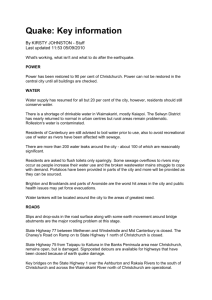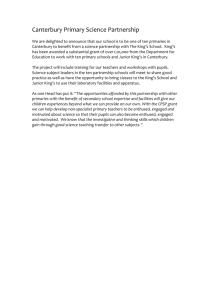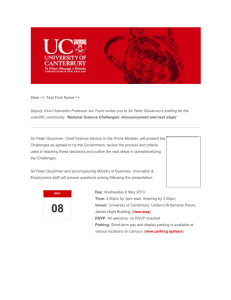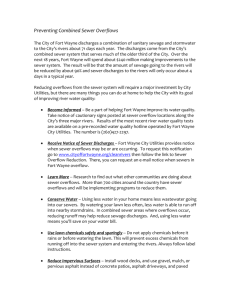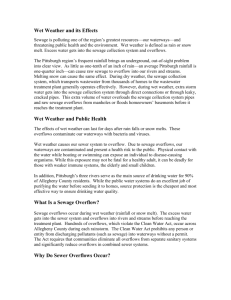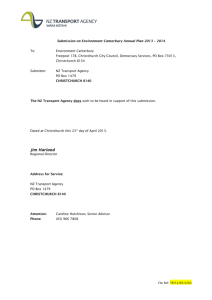Waterways cleared of sewer overflows
advertisement
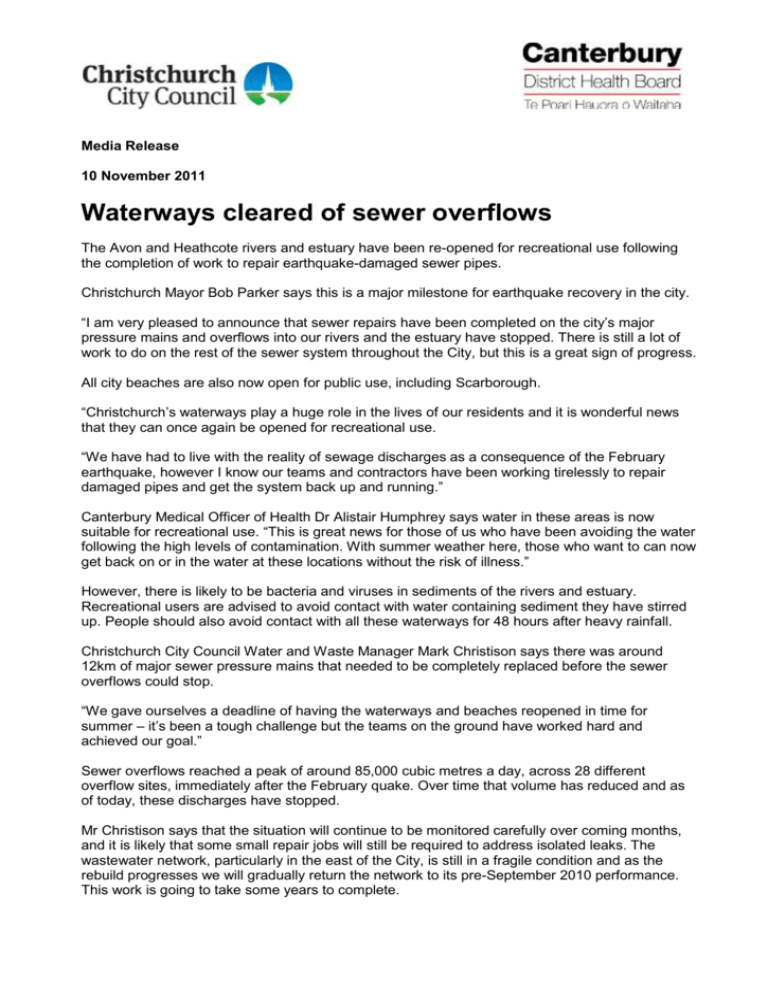
Media Release 10 November 2011 Waterways cleared of sewer overflows The Avon and Heathcote rivers and estuary have been re-opened for recreational use following the completion of work to repair earthquake-damaged sewer pipes. Christchurch Mayor Bob Parker says this is a major milestone for earthquake recovery in the city. “I am very pleased to announce that sewer repairs have been completed on the city’s major pressure mains and overflows into our rivers and the estuary have stopped. There is still a lot of work to do on the rest of the sewer system throughout the City, but this is a great sign of progress. All city beaches are also now open for public use, including Scarborough. “Christchurch’s waterways play a huge role in the lives of our residents and it is wonderful news that they can once again be opened for recreational use. “We have had to live with the reality of sewage discharges as a consequence of the February earthquake, however I know our teams and contractors have been working tirelessly to repair damaged pipes and get the system back up and running.” Canterbury Medical Officer of Health Dr Alistair Humphrey says water in these areas is now suitable for recreational use. “This is great news for those of us who have been avoiding the water following the high levels of contamination. With summer weather here, those who want to can now get back on or in the water at these locations without the risk of illness.” However, there is likely to be bacteria and viruses in sediments of the rivers and estuary. Recreational users are advised to avoid contact with water containing sediment they have stirred up. People should also avoid contact with all these waterways for 48 hours after heavy rainfall. Christchurch City Council Water and Waste Manager Mark Christison says there was around 12km of major sewer pressure mains that needed to be completely replaced before the sewer overflows could stop. “We gave ourselves a deadline of having the waterways and beaches reopened in time for summer – it’s been a tough challenge but the teams on the ground have worked hard and achieved our goal.” Sewer overflows reached a peak of around 85,000 cubic metres a day, across 28 different overflow sites, immediately after the February quake. Over time that volume has reduced and as of today, these discharges have stopped. Mr Christison says that the situation will continue to be monitored carefully over coming months, and it is likely that some small repair jobs will still be required to address isolated leaks. The wastewater network, particularly in the east of the City, is still in a fragile condition and as the rebuild progresses we will gradually return the network to its pre-September 2010 performance. This work is going to take some years to complete. “At the same time as the repair work has been underway, our maintenance teams have also been working on the clean-up of the estuary edge and waterways to make them safe for residents to use.” There will still be the occasional, short duration discharges of untreated sewage into the rivers as a result of problems encountered during repairs to pumping stations and pipes. When such events occur the public will be kept informed through the warning signs that will be erected at the location, warnings on the Environment Canterbury website and facebook page and public warnings through the media. Environment Canterbury will begin routine monitoring at the popular freshwater and coastal sites in Canterbury next week. For more information about the water quality at swimming sites in Canterbury visit the Environment Canterbury website or facebook site. http://ecan.govt.nz/services/online-services/monitoring/swimming-water-quality/Pages/checkswimming-water-quality.aspx http://www.facebook.com/canterburyrecwater For more information contact: Amanda Healy Senior Communications Adviser Christchurch City Council 027 599 4579 or Amy Milne Canterbury DHB Media Liaison (03) 364 4122 027 502 7523 amy.milne@cdhb.govt.nz



